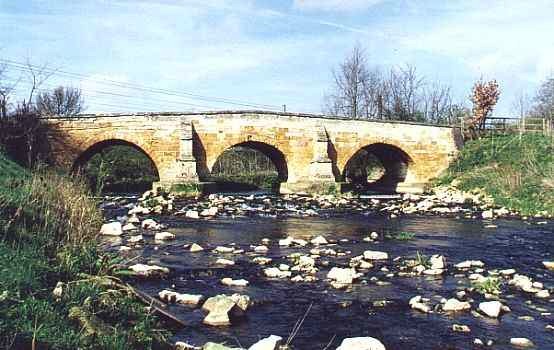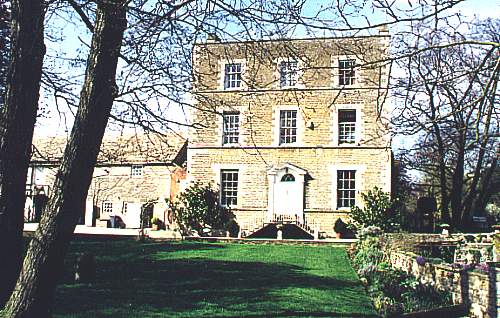|
Lolham
Lolham is best known as a railway crossing over the main east coast line near West Deeping, ten miles south of Bourne, but it does have a small farming community, a water-mill and some historic stone bridges.
This is one of the oldest and it spans the Maxey Cut just a few yards from the railway line and is only wide enough to take single lane traffic. There has been a bridge at this point since Roman times and this structure of mellowed stone dates back to the 17th century but is still able to cope with regular use by modern cars and farm vehicles.
The
Lolham Bridges as they are known, consist of a long causeway with several
17th century arches. One of the cut waters between the arches immediately
north of the level crossing bears an inscription giving the date 1641
while on another arch further north, which has projecting keystones, is
carved the date 1790. The arch rings are quite plain but those of the four
semi-circular arches south of the crossing are chamfered. It would appear
that the whole causeway was repaired during the second quarter of the 17th
century because it was referred to in 1621 by Sir George Manners who wrote
that "the decayed bridge at West Deeping, th' ordinarie roade way
from Lincolne to London, are verie fowle and dangerous".
Lolham Mill stands on the River Welland and was built in 1640. The old mill survives behind the main house but it is this imposing building of Regency design added almost two centuries later that catches the eye. The mill no longer grinds corn and is now a working farm, standing amid a landscape of wood-fringed meadows and sheep pastures, beautifully maintained with well-tended gardens and many features from its historic past while the mill race and operating machinery can still be seen above the mill pool.
|
LOLHAM MILL was badly
damaged by fire shortly before Christmas in 1880 and the following
report on the incident was carried by the Stamford Mercury on
24th December:
A very destructive fire
broke out at about midnight on Monday last at Lolham flour mills,
the property of Mr John Addy, Esq., and in the occupation of Mr
Arthur Warwick. About 12 o'clock, Mr and Mrs Warwick were alarmed
by a strong smell of smoke in their bedroom and a vivid light
shining through the opening of the shutters, and on getting up
they found the mill completely in flames. Mrs Warwick, having
called up her servants and children, proceeded to the
village of West Deeping, which is about half a mile distant, and
called up Mr Harvey Francis and Mr Edward Smith. They and a number
of the villagers quickly proceeded to the scene of the fire, and
finding it was hopeless to attempt to save any portion of the mill
or the contents, they directed their efforts to saving the house,
which was separated about a foot from the mills, with a door
opening into them. Blankets and carpets were hung before the door,
and a continual stream of water poured upon them, whilst Mr
Warwick and his men threw buckets of water on the opposite side,
and others threw water from the top of the house between the two
buildings. By this means they were able to prevent the flames from
spreading to the house and shortly after the Deeping St James fire
engine, which had been sent for, arrived, and under the direction
of Mr Achurch began to play upon the burning mill and house. Some
time after, the Stamford engine arrived, and was followed by the
Burghley House steam fire-engine, but by that time the mill was
nearly gutted, and all that could be done was to try and prevent
the fire from extending beyond the mill, which happily they
succeeded in doing. The mill store-rooms were well stocked with
flour and corn, all of which, with the exception of a few bags,
were consumed. So fierce was the fire that in about 10 hours, the
whole of the large mill and the contents were consumed. A brisk
wind blew from the west, which helped to save the house and other
buildings. The Deeping St James engine remained during the next
day and following night to play upon the smouldering flour, corn
and embers. The buildings are insured in the Phoenix Fire office,
and part of the stock-in-trade in the Suffolk Alliance. |

Go to:
Main Index Villages
Index
|

